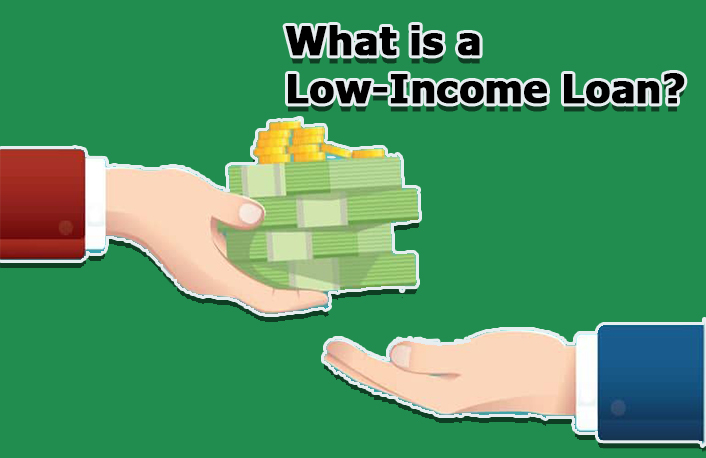Financial stress can affect almost everyone. This stress can get higher if you have a low income because it would be hard to pay for regular expenses and an emergency that could make your finances off balance. However, a personal loan can offer financial support to individuals with a low income, but be cautious of hidden costs, fees, and interest rates.

A low-income loan is made for borrowers who might get rejected by traditional personal loan providers or denied access to other lenders due to their income. While proof of income may be needed for these loans, there isn’t a predetermined income requirement to be eligible. This article will offer you information about low-income loans, how to be eligible, and their benefits and drawbacks.
Types of Low-Income Loans
A low-income loan can be either a secured or unsecured personal loan. Secured personal loans may be less difficult to get approved for than unsecured loans. This is because they are backed by collateral, such as a car or deposit. However, if you miss payments, you will lose your assets.
When you apply for an unsecured loan, the lender looks more closely at your income, credit history, and debt-to-income ratio. This is because there is no collateral needed. The lender will approve the funds if it determines you have the ability and chance to repay your loan on schedule.
How to Be Eligible for a Low-Income Loan
When assessing borrowers, lenders consider several factors, including income. If your income is less than average, you may be able to improve your chances of being approved for a personal loan by using these methods.
Check your credit report
When approving a loan, many lenders take your credit history into account. Verify that there are no errors on your credit report, such as misspelled names or fraudulently reported delinquencies. This could reduce your credit score and your chances of getting approved.
List every source of income
Low-income borrowers can frequently list earnings from sources other than traditional employment. Furthermore, this includes Social Security perks, child support, alimony, and freelance work.
Minimal debt-to-income
Additionally, lenders want to know how much of your monthly income you are currently devoting to debt repayment. Furthermore, states that the majority of lenders prefer to see a debt-to-income ratio of 40% or less.
Get a co-signer
A co-signer or co-borrower is an individual with a higher income and credit score who agrees to sign a loan document and serve as a guarantor. This person guarantees that they will pay back your loan if you are unable to. Having a co-signer can improve your chances of getting a loan approved and possibly even result in much better terms. This can be especially helpful if you have no credit history and are trying to obtain a loan.
Active bank account
To deposit the loan funds, you need to have an active bank account in your name. However, some lenders may wish to review the balance and activity of your account. Certain lenders will transfer the money directly to your creditors on your behalf if you’re using the loan to consolidate debt.
When to Consider a Low-Income Loan
There are many reasons why you could be eligible for a low-income loan. You might choose to use the money to assist with unexpected medical bills or car repairs, among other necessities or emergencies. The loan may also be used to steer clear of costly options like payday loans and pawnshop loans.
Your ability to become more financially stable is another reason to think about a low-income loan. Paying your bills on time each month will help raise your credit score. Additionally, utilizing a low-income loan for debt consolidation can save hundreds or thousands of dollars by eliminating the higher interest rates associated with the original loans.
How to Get a Low-Income Loan
Even though the process of getting a low-income loan is rather simple, you should still educate and get ready. Before receiving the money, you will need to investigate lenders, determine your eligibility, gather supporting documentation, apply, and go over the loan terms.
Verify your credit
To ensure you know what you’re working with, first check your credit score and examine your credit reports. It could be worthwhile to challenge any inaccuracies you find on your credit reports before applying.
Get pre-approved
With no negative effects on your credit score, many lenders allow you to quickly and easily pre-qualify for a loan online. This allows you to view your possible rates in advance. Discovering an affordable loan can be facilitated by comparing offers from various lenders.
Weigh fees, terms, and rates
Pay attention to the loan’s fees, terms of repayment, and annual percentage rates (APRs) when comparing offers. Make sure the offer you choose has monthly payments that you can afford.
Send in your application
Filling out a complete application is the next step if you decide to accept an offer. You’ll have to submit your financial and personal information along with any necessary paperwork, like W-2s or pay stubs. Make sure to include all of your income sources that qualify. At this point, the lender will probably initiate a hard credit inquiry.
Furthermore, while some lenders process applications quickly, others may take a little longer to approve and release funds. To find out when your first payment is due, check your loan contract. To ensure that you never forget a bill, consider establishing automatic payments.

